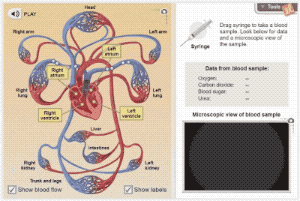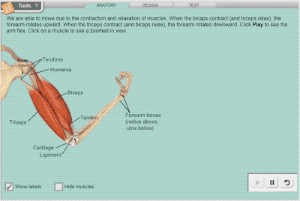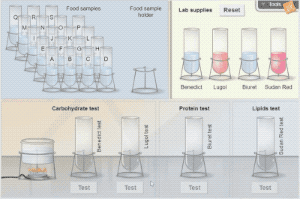Teaching Students About the Digestive System with Gizmos

How can you teach students about the digestive system in an interactive way? Unless you’re Ms. Frizzle, it’s hard to take a field trip inside a stomach, but with virtual simulations like ExploreLearning Gizmos, students can get hands-on experiences with a digestive system activity as they learn about the different internal organs and chemicals that aid in digestion.
What is the digestive system?
From the small intestine to the large intestine and everything in between, the digestive system consists of organs that help a body digest food, absorb nutrients, and eliminate waste. Digestion is the breakdown of food into simpler components. Absorption is the passage of nutrients and water through the walls of the small and large intestines. The digestive system turns food into energy and nutrients to help the body survive, energize, grow, and repair cells.
Why teaching the digestive system is important
Why should your class be learning about the digestive system? Understanding the digestive system helps students connect science to their daily lives. It explains how their bodies process food, absorb nutrients, and eliminate waste. Teaching the digestive system also supports lessons in biology, nutrition, and human health, helping students develop a deeper appreciation for how their bodies function.
The digestive system is typically introduced in upper elementary and middle school science curricula. However, high school students often revisit the topic in biology and health classes. Using interactive digestive system activities across grade levels ensures students retain key concepts and more.
How to teach the digestive system effectively in your classroom
There are many ways to make learning about digestion engaging, including the following:
- Hands-on models: Use physical models or diagrams to visualize the digestive system.
- Experiments: Have students track digestion by analyzing how food breaks down.
- Simulations: A digestive system virtual lab allows students to explore digestion interactively. Virtual simulations like the Digestive System Gizmo provide an excellent way to teach the digestive system interactively.
- Class discussions: Encourage students to share what they already know about digestion and what they’d like to know more about.
Using virtual labs to introduce the digestive system
Guide students through the process of digestion with interactive activities of the digestive system in the Digestive System Gizmo. This digestive system virtual lab allows students to engineer their own working system to demonstrate the process of digestion using large and small organs and various foods (from pecan pie to cheeseburgers!) to discover how the human body breaks down food, absorbs nutrients, and processes waste.
The Digestive System Gizmo is designed to support a variety of learning styles, making it ideal for visual, kinesthetic, and inquiry-based learners who benefit from interactive experiences. Teachers can also feel confident incorporating it into their lesson plans, as it aligns with state science standards and reinforces key learning objectives.
Additionally, the Gizmo helps students develop problem-solving skills by engaging them in engineering-based tasks, where they test and optimize their own digestive system models. With these benefits, the Digestive System Gizmo transforms the way students learn about digestion, making it both more effective and more engaging in the classroom.
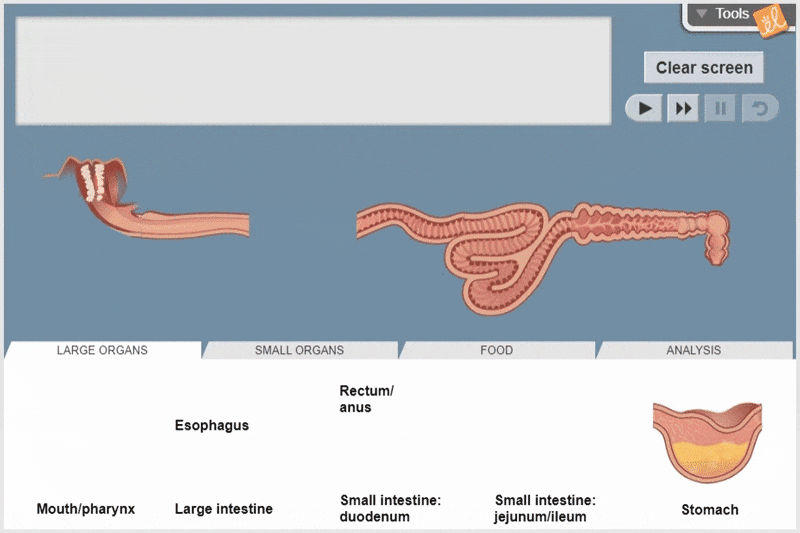
As students progress through the Gizmo, they are supported with a Student Exploration Sheet that activates background knowledge and guides learning as they experiment with various parts of the digestive system. For more details about teaching this Gizmo, check out the Professional Development Video.
Gizmo digestive system lesson objectives
The Digestive System Gizmo provides an interactive way for students to explore the key processes of digestion. Through hands-on experimentation, students will build models, analyze digestive functions, and investigate how nutrients are absorbed in the body. The following lesson objectives ensure a comprehensive understanding of the digestive system for students:
- Explore the three functions of the digestive system: digestion, absorption, and elimination.
- Create a model of the human digestive system using available organs and cells.
- Determine the importance of mechanical digestion by the mouth, stomach, and bile.
- Describe the steps of chemical digestion for carbohydrates, proteins, and fats.
- Explain how nutrients are absorbed into the body.
Each Gizmo also includes a teacher guide and vocabulary for easy lesson planning and implementation. All documents are fully customizable (Microsoft Word, Google Doc, and PDF versions) to fit your teaching needs. Assessment questions are included in each Gizmo, so you can quickly monitor and assess learning.
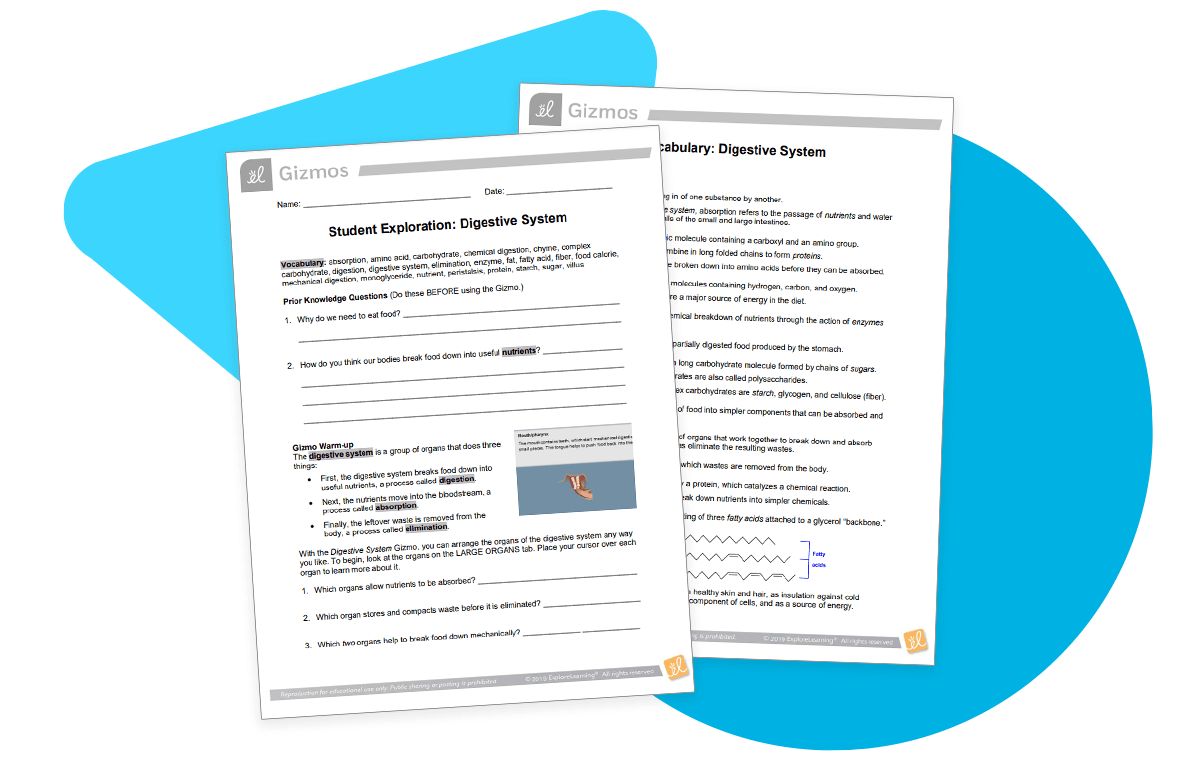
Gizmos allow students to engage with Science and Engineering Practices in interactive ways. This virtual simulation lets students deeply engage with the engineering design process. In Activity A, students design their own digestive system (engineering skills: define the problem, generate and evaluate multiple solutions, build and test prototypes, and optimize a solution). Students explore mechanical and chemical digestion in Activity B.
In Activity C, students determine how different nutrients are absorbed (engineering skills: generate and evaluate multiple solutions, build and test prototypes, and optimize a solution). In Activity D, students apply all of their learning to demonstrate their understanding of the digestive system.
“I love that the Digestive System Gizmo allows students to view and discover how different parts of the digestive system work.”
-Jennifer Cherry, high school science teacher
Bring the digestive system to your classroom with Gizmos
By integrating the Digestive System Gizmo into your classroom, students gain a deeper understanding of digestion through exploration and discovery. This interactive approach not only boosts engagement and retention but also encourages critical thinking as students analyze how different organs and enzymes work together.
With built-in assessments and customizable lesson plans, Gizmos make teaching the digestive system both effective and fun for students of all learning levels. Try our interactive digestive system virtual lab that makes learning fun and engaging!
Other human body simulations
Looking for other Gizmos to help students explore the amazing human body?
Check out these interactive labs.
